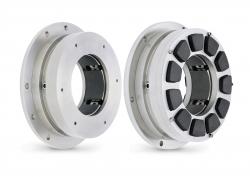
- Contact:Minister Xu
- Mobile:13841408476
- Tel:024-44837288
- Fax:024-44837004
- E-mail:xuming58@126.com
- Web:www.natashaterry.com
- Address:No.110 XiangHuai Road
Benxi Economic Development Zone
Liaoning Province
The expanding universe of fluid film bearing materials
12 Feb,2019
Sriram Venkatesan outlines differentiating characteristics of fluid film bearing material options, from babbitt to diamond

Fluid film bearings are often designed as a sacrificial component in rotating machines. The primary characteristics of a bearing material are compatibility, conformability and embeddability.
In broad strokes, compatibility is the resistance to seizure during a metal-to-metal contact event; conformability allows the bearing to conform to minor variations in the counter surface; and embeddability provides the ability to accept small amounts of foreign particles in the lubricant. These qualities reduce the likelihood of damage to the shaft during start-up and shutdown, or from upset conditions, misalignments or occasional ingestion of contaminants.
A bearing material must also have adequate compressive strength, temperature capability, and corrosion and wear resistance for the given use.
To meet the widening range of application requirements and operating conditions for high- performing rotating equipment, advances in fluid film bearing materials give differing emphasis to these ideal characteristics, sometimes requiring trade-offs. Depending on the particular machine’s needs, fluid film bearing material options include tin-based alloys (babbitt), bronze, aluminium-tin, engineered polymers, ceramics (and cermets) and super-hard materials such as polycrystalline diamond (PCD).
Tin-based babbitt, also referred to as whitemetal, is a ‘soft’ metal that exhibits excellent conformability, compatibility and embeddability. Babbitt has long been a standard for oil-lubricated fluid film bearing materials; however, it is typical industry practice to limit the maximum operating temperature of babbitt bearings to 130°C (266°F). In addition to its low temperature threshold, babbitt has a relatively low fatigue strength compared to advanced materials.
When bearing environment temperatures increase beyond the limits of babbitt but loads remain relatively low, bronze bearing surfaces can provide additional safety margin at the higher temperature. Successful operational experience of bronze bearings exists at lubricating oil temperatures beyond 150°C (302°F) at relatively low loads.
The conformability and embeddability of bronze bearings, however, are inferior to those of babbitt.
Increased temperature and loads
Aluminium-tin bearings may provide drop-in replacement for babbitt bearings to increaseboth temperature and load capability within the same envelope. Aluminium-tin bearings can operate at temperatures up to 160°C (320°F), with a much higher fatigue strength than babbitt.
Being a metallic bearing material like babbitt, aluminium-tin allows existing protocols to be used for monitoring bearing health.
Aluminium-tin bearings can also increase safety margin in case of an unexpected upset condition such as loss of lubrication or accidental overload. The embeddability and conformability characteristics of aluminium-tin are superior to bronze.
Engineered polymers exhibit embeddability and conformability comparable to babbitt’s, preventing damage to the shaft when small amount of debris enter the lubricant film. They have emerged as an effective solution to further expand operating temperature capability and support higher loads. With clean low-viscosity lubricants (such as water), polymer bearing designs have proven to operate reliably on a relatively thin lubricant film.
Polymer bearings typically have a maximum operating temperature of 200°C (392°F); beyond this, polymer loses strength and therefore load capacity.
An added benefit of polymer in applications involving electric motors and generators is its insulating property, which prevents stray shaft currents from transmitting through the bearing, eliminating the need for an insulating layer between the bearing and its housing.
Harsh environments
The need for high bearing load capacity at still higher operating temperatures, as in steam-assisted gravity drainage (SAGD) applications, is met by the use of ceramic/cermet materials such as certain grades of silicon carbide and tungsten carbide. These materials retain high strength at temperatures of 300°C (572°F) and higher. They can also accommodate minor amounts of abrasives, such as sand, in the lubricating fluid without surface damage, thereby improving bearing reliability in such harsh environments.
When there is a relatively large amount of abrasives in the lubricant and/or when the lubricant is a multiphase fluid, a super-hard bearing material such as PCD provides a robust bearing surface for reliable operation. PCD bearings offer superior wear resistance when compared to ceramics. Because they can use the process fluid as a lubricant, they can potentially eliminate the need for shaft end seals and lubricating systems in certain applications.
The best material choice for fluid film bearings is application dependent, and material alone will not guarantee performance. The selected material(s) must be paired with an appropriate and optimised bearing design to provide the longest life and optimal performance.









